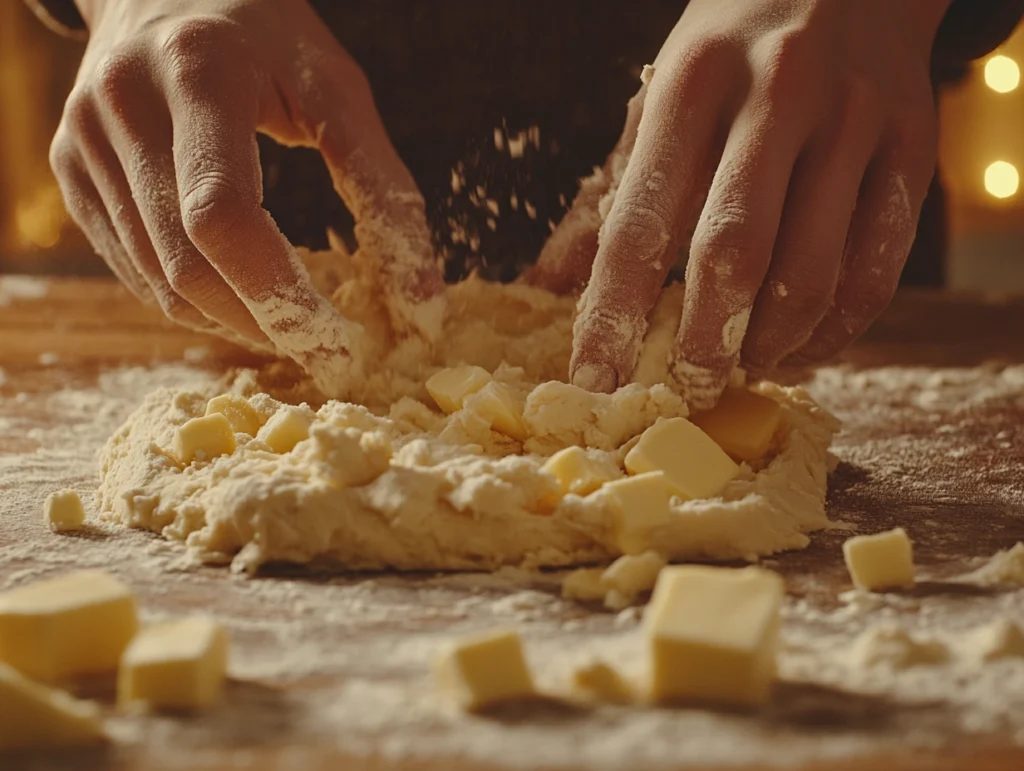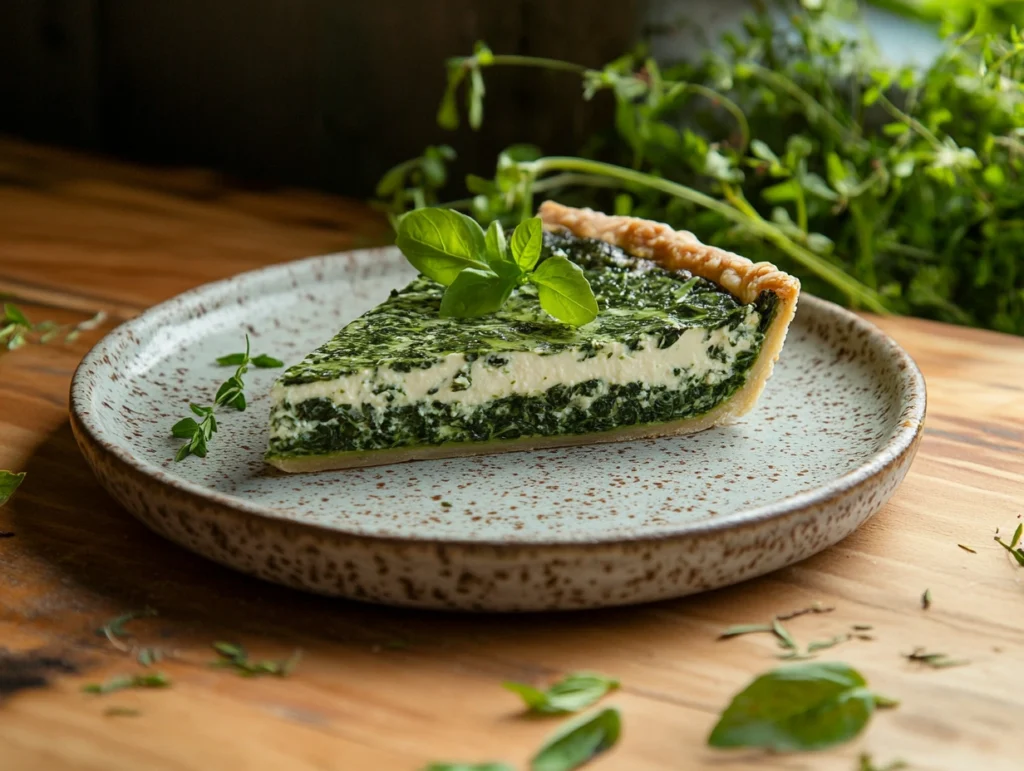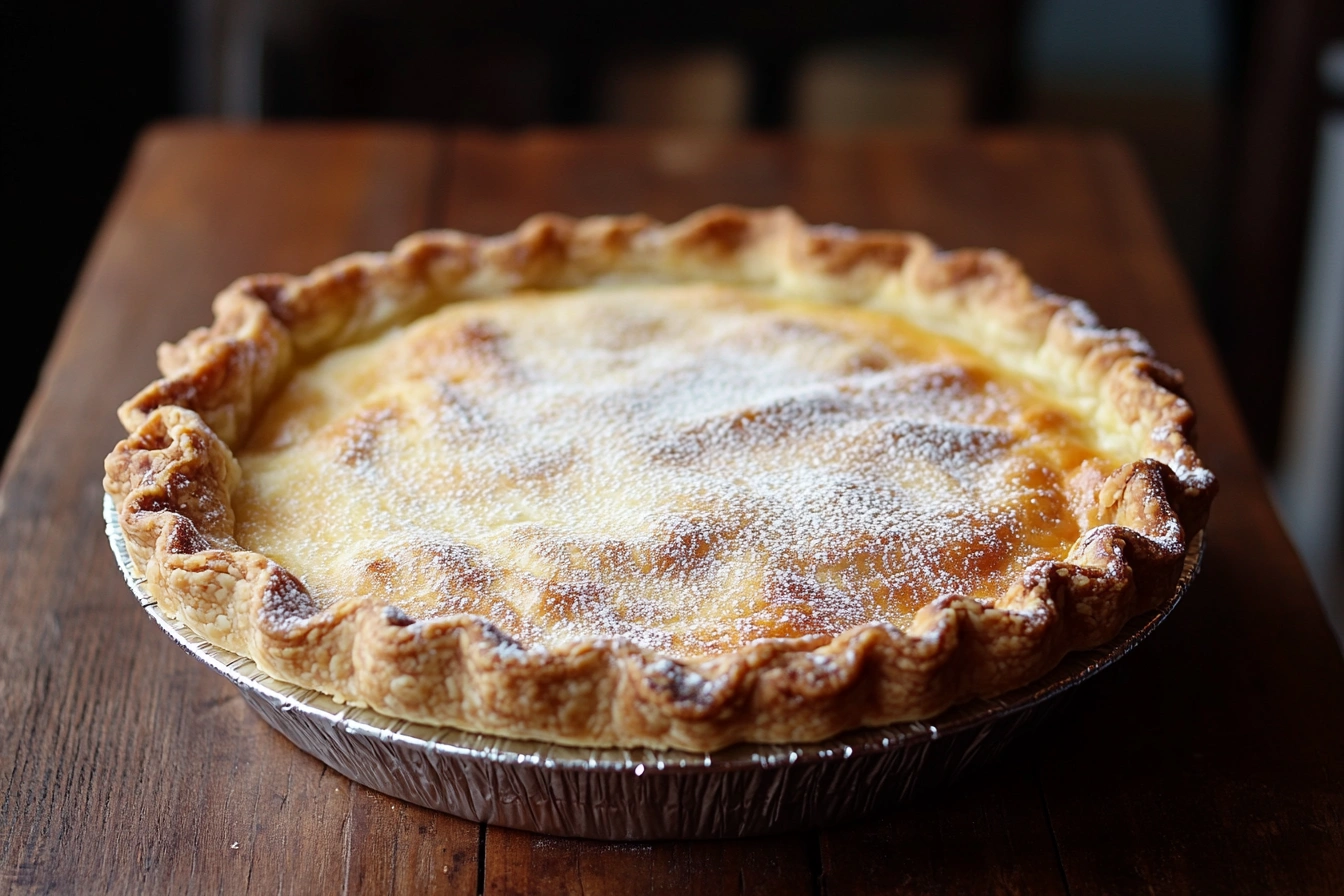Ever tried something that feels comforting, yet refined enough to impress everyone gathered around your kitchen table? These recipes for ricotta pie just might be the answer. Picture a creamy filling that gently melts in your mouth, a delicate crust that crisps ever so slightly under your fork, and subtle hints of zest or sweetness that keep you swooning. This guide explores how to choose the best ricotta, craft the perfect crust, and embrace the timeless traditions that shaped this beloved Italian dessert. From classic approaches to inventive twists, the upcoming sections delve deep into flavor, technique, and versatility so that you can bring this luscious creation to life in your very own home kitchen.
Part 1 : Recipes for Ricotta Pie: A Complete Guide
No other dish whispers comfort quite like a fresh, homemade ricotta pie. It often appears during special celebrations, which is not surprising, considering its origins. While it is delicate and creamy, it’s also surprisingly easy to prepare. Yet, because of its Italian roots, many find a powerful sense of nostalgia in each forkful. With just a few quality ingredients and a gentle touch, you can bring authentic, unforgettable flavors right into your own space. It’s a dessert that invites you to slow down, share stories, and savor every moment. Indeed, Italian dessert traditions shine through with this lovely creation.
Understanding the Origins and Tradition of Ricotta Pie
Long ago, humble farmhouse kitchens in Italian villages gave birth to various Italian-American cuisine delights. Ricotta pie, once reserved for special holidays, quickly won hearts far beyond the countryside. It spread through generations, crossing oceans as families carried recipes from one continent to another. Over time, subtle tweaks appeared—perhaps a touch more citrus, maybe a hint of vanilla—ensuring that each home developed its signature spin. Eventually, these old-world treats became known to food lovers everywhere, weaving layers of culture and tradition into every bite. Today, its lovely aroma often graces tables at Easter gatherings, though no one says you can’t enjoy it any day of the year.
Key Ingredients: Selecting Quality Ricotta and Other Essentials
Although simple at first glance, picking top-tier ingredients matters. Opt for fresh ricotta cheese that’s creamy, not watery, since it forms the pie’s foundation. Then, consider your eggs—rich and golden for maximum flavor and texture. Sugar, of course, sweetens the deal, but keep an open mind. A gentle sprinkle of lemon zest or even a dash of vanilla can bring brightness. Meanwhile, ensure flour and butter come together harmoniously to create that tender, flaky crust. Maintaining a certain balance creates layers of complexity within a straightforward dessert. After all, without quality, even the most enchanting dish falls flat. Here, taste and texture become inseparable partners.
Understanding the Importance of the Crust
A proper crust ensures that every spoonful marries rich filling with just the right amount of crispness. Don’t think of crust as a mere vessel—it’s integral to the final experience. A buttery, shortcrust pastry can lend subtle notes of nuttiness, while a standard pie crust keeps things classic and versatile. Aim to roll your dough evenly, and avoid overworking it, which can reduce tenderness. Chill it first, then blind bake, if you dare, to prevent sogginess. This structural foundation lets the smooth filling shine without turning heavy or mushy. Plus, the gentle snap of a perfect crust contrasts beautifully with the creamy center.
Nutritional Profile and Health Benefits
While it may sound indulgent, this traditional Italian pastry can fit into a balanced lifestyle. Ricotta contains protein and essential minerals, offering nutritional perks, especially when enjoyed in moderation. Although it’s sweet, you can manage sugar levels to suit your preferences. Serve smaller portions, add fresh fruit for a brighter accent, and appreciate the blend of comforting richness and nutritious elements. Instead of feeling guilty, savor how each bite incorporates dairy’s creaminess and subtle sweetness. This approach transforms what might be seen as a “treat” into a mindful, satisfying indulgence that doesn’t have to break any personal rules.
Part 2 : Classic Italian Ricotta Pie Recipe: Step-by-Step Instructions
First, gather your tools and set your mood—perhaps some uplifting background music and a clean, spacious countertop. Begin by sifting your flour to banish lumps, ensuring a light, airy base. Cut butter into tiny cubes, mixing them gently until you have a crumbly mixture. Add a pinch of sugar and just enough cold water to create a smooth dough. Let it rest, covered, in the refrigerator so flavors mingle and textures refine. Meanwhile, whip your creamy ricotta filling: whisk the cheese until velvety, beat in eggs, add sugar, and sprinkle zest. Then roll out your chilled dough, guiding it into your pie dish. Pour the silky mixture on top. Carefully pop it in the oven. Wait patiently as your home fills with that irresistibly sweet aroma. When slightly golden, remove and let it rest, so the filling sets. Slice and enjoy, savoring how luscious yet simple it can be.

Mastering Dough Techniques for a Flaky Crust
Roll your dough without fuss. Quickly handle it, but avoid pressing too hard. If it starts sticking, dust lightly with flour or slip a parchment sheet underneath. Keep butter bits visible as tiny specks—those will turn into pockets of steam, creating a tender crumb. Aim for consistency in thickness. After all, that final crispiness rewards delicate precision. With time, you’ll find your rhythm. And trust me, once you nail this method, other pastries seem much easier.
Adjusting Sweetness and Texture to Taste
Your taste buds dictate the final tune. Prefer more subtle sweetness? Use less sugar. Crave brightness? Add a tad more lemon zest or a whisper of orange blossom. If the filling seems too dense, reduce eggs slightly or choose a fluffier ricotta brand. This dessert thrives on customization. Play around, experiment, and find your perfect bite. By staying flexible, you celebrate the authentic Italian baking spirit of personal flair and adaptation.
Part 3 : Exploring Sweet Ricotta Cheese Pie Variations
Although the classic version dazzles, these variations unleash even more exciting flavors. As you venture beyond the basics, you discover unexpected twists that bring vivid contrasts and crave-worthy textures. Moreover, they showcase the adaptability of Italian dessert traditions. Whether you prefer bright citrus, pockets of sweetness, or fruity bursts, these options deliver. Thus, reinventing your classic Italian treat proves easier than ever. Above all, experimenting with these themes keeps your baking fresh, delightful, and crowd-pleasing.
Citrus-Infused Lemon Ricotta Dessert Pie
If you enjoy a tangy finish, consider a lemon-infused approach. Adding lemon zest and perhaps a splash of citrus essence creates a vibrant flavor that feels refreshing. In addition, select sweet ricotta to complement that zing, ensuring a harmonious balance. As you bite in, your taste buds dance, invigorated by gentle tartness playing off delicate sweetness. Pair it with fresh fruit—like a few sliced strawberries—to heighten complexity. Above all, remember to taste-test as you go, tweaking citrus levels until it sings just right.

Chocolate Chip Ricotta Tart
For chocolate lovers, try folding chocolate chips into your whipped ricotta mixture. Not only does this add richness, but it also surprises anyone expecting the standard version. Meanwhile, mini chips ensure even distribution, ensuring every slice includes chocolaty pops. Moreover, serve warm, allowing tiny chocolate pockets to melt on your tongue. Sprinkle cocoa powder over the top if you crave extra intensity. Indeed, this variation transforms a familiar dessert into something utterly indulgent yet still refined.
Berry-Studded Ricotta Cheesecake Pie
Bursting with seasonal fruit, this option embraces natural sweetness. Gently fold fresh or frozen berries—think blueberries, raspberries, or even cherries—into your ricotta filling. Thus, you introduce subtle tart flavors and eye-catching colors. Consider how each berry variety influences texture: softer raspberries create a jammy effect, while firmer blueberries offer little pops of juice. Furthermore, dust the top with powdered sugar just before serving. The result? A visually appealing dessert featuring creamy smoothness and fruity brightness—an absolute showstopper.
Savory Ricotta Pie Options
Not every pie needs to be sweet. In fact, a creamy ricotta pastry can swing savory with ease. By adding vegetables, herbs, or even earthy mushrooms, you get a comforting dish that works as a brunch highlight or light dinner. Who knew Italian-American cuisine could shift gears so effortlessly?
Spinach and Ricotta Variation
Transform your ricotta pie recipes into a savory masterpiece by stirring in sautéed spinach. Add minced garlic and a pinch of nutmeg, creating layers of subtle complexity. The result tastes like a quiche but with a fluffier, almost custard-like consistency. Serve warm, perhaps with a crisp salad, for a balanced meal.
Mushroom and Ricotta Take
Sautéed mushrooms bring umami depth. Include herbs like thyme and parsley to enhance earthy flavors. Because the ricotta remains mild, it easily showcases the mushrooms’ rustic character. As a result, each forkful tastes comforting, hearty, and utterly satisfying. It’s a homemade pastry dough gem that broadens your culinary horizons.
Gluten-Free and Dietary Adaptations
For those with restrictions, switch to a gluten-free pie crust. Almond or rice flour blends yield a flaky pastry that mimics traditional textures. Meanwhile, lactose-free ricotta or plant-based alternatives ensure everyone can partake. By adjusting sugar or choosing alternative sweeteners, you create a dessert suitable for many dietary needs. In short, no one gets left behind.
Tips for Perfect Presentation and Garnishing
Presentation matters. Slice neatly with a sharp, warmed knife to ensure clean edges. Dust lightly with powdered sugar or top with fresh fruit. Moreover, consider a drizzle of honey or a scattering of nuts for crunch. Ultimately, these finishing touches turn a basic dish into something unforgettable. In other words, a family recipe becomes a feast for both eyes and taste buds.
Part 4 : Pairing and Serving Suggestions for Ricotta Dessert Pie
Once you’ve crafted this luscious creation, serving it thoughtfully elevates the entire experience. Although delicious when enjoyed as-is, consider complementing it with a warm cup of coffee, herbal tea, or even fresh fruit juice. By pairing creamy sweetness with subtle beverages, you balance textures and flavors. If you’d like something extra special, arrange seasonal berries alongside each slice, or drizzle a touch of honey for natural sweetness. In essence, the right combination transforms a simple dessert into a memorable centerpiece, encouraging friends and family to linger over every last crumb.
Storing, Freezing, and Reheating Ricotta Pie Recipes
After you’ve enjoyed a lovely meal, don’t fret if there are leftovers. Rather than rushing, wrap the remaining slices in parchment or store them in an airtight container. Keep them refrigerated to maintain freshness. If you prefer long-term storage, freezing is an option: simply seal the pie tightly, then thaw it gently before serving again. When it’s time to reheat, do so slowly in the oven, ensuring that you preserve its flaky crust and creamy center. By following these steps, you extend your dessert’s lifespan, allowing you to savor that comforting taste whenever the craving appears.
Troubleshooting Common Issues with Ricotta Cheese Pie
If something’s off, don’t panic. When the crust turns soggy, consider blind-baking longer next time, or dust a thin layer of ground nuts under the filling to absorb moisture. Encountering cracks on the top? Reduce baking time slightly or lower the oven temperature to keep the filling custardy and smooth. If the filling seems loose, select a firmer ricotta brand or drain excess liquid. While these hiccups happen, small adjustments restore that dreamy consistency. After all, practice and experimentation help you gain confidence, ensuring that each future pie emerges just right—truly capturing the essence of these recipes for ricotta pie.
FAQs
Is ricotta pie similar to cheesecake?
Not quite. While both rely on creamy cheese, ricotta pie tends to be lighter and fluffier. Cheesecake is often denser and richer, while ricotta pie’s texture is more custard-like and delicate. Think of ricotta pie as a gentler, subtly sweet treat that highlights the freshness of the cheese.
How do I keep ricotta pie filling from being watery?
Start by choosing top-quality, full-fat ricotta. If your ricotta seems too moist, gently drain it in a cheesecloth-lined sieve for several hours to remove excess liquid. Also, baking at the proper temperature and not rushing the cooling process help the filling set without turning runny.
Do I need to drain ricotta cheese before making the pie?
If your ricotta feels overly wet, yes, draining it ensures a thicker, creamier filling. Skip this step if your ricotta is already firm. Proper texture prevents the final pie from becoming soggy and improves the overall mouthfeel, making each bite smoother and more pleasing.
Can I use store-bought crust for a ricotta dessert pie?
Absolutely. Although homemade crust offers a flaky, melt-in-your-mouth experience, store-bought dough saves time and still yields a delightful outcome. Just make sure to select a high-quality crust and follow package instructions, adjusting bake times as needed.
What’s the best way to store leftover ricotta pie?
Refrigerate any remaining slices in an airtight container. Chilling preserves both flavor and texture. Enjoy it cold, or warm it gently in the oven before serving to restore that tender, creamy filling. This way, you keep your treat fresh and tasty for several days.
How do I know when a ricotta pie is fully baked?
Look for a subtle, golden hue on the crust’s edges and a slightly firm center. A gentle jiggle in the middle that settles as it cools suggests it’s done. Avoid overbaking to prevent dryness and maintain that velvety, custard-like texture.
Conclusion
In the end, recipes for ricotta pie let you bring authentic, old-world flair straight to your table. From understanding proper techniques to personalizing flavors, every step enriches your baking journey. As you experiment, remember that freshness, balance, and a hint of creativity shape the ultimate ricotta pie experience. Each slice whispers stories of tradition, comfort, and sweet indulgence—ready to delight both palate and soul.

